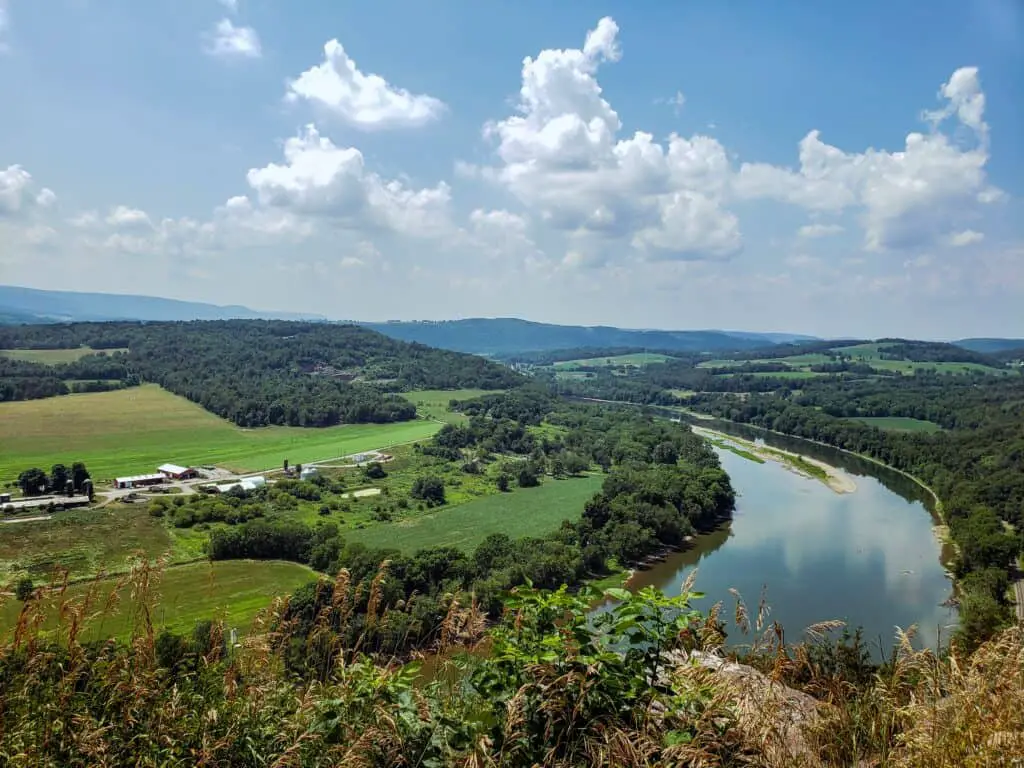Located in Annville, Pennsylvania, this mill has been in operation since about 1740. It’s one of the oldest of its kind in the United States. At the core of the Annville community, there was the Penn Land Grant. It was first used as a grist mill, a sawmill, and even a fulling mill for the processing of wool.
Annville Mill in Pennsylvania
The waters of the Quittapahilla Creek nearby also made it easy for local folks who grew soft grain and needed flour. There was a millstone found in the foundation of the present building suggesting an even older mill on the site.
In 1890 to the south in Lancaster County, five independent grocers met and agreed to mill a premium flour from local grain for their customers. This was the beginning of the Daisy logo.

Roller Mill Process
In the United States in 1905, a roller mill process was developed. It allowed for more volume and a much finer flour. The natural flour is made from the endosperm of each individual berry of wheat by rubbing, shaking, and sifting them.
Each batch then makes several passes through four small roller stands. Between the passes, the grain is carried to the top floor of the mill. After being sifted, the middlings is ground and re-introduced to create whole wheat flour.
The water wheel was removed in 1909 and three vertical water turbines powered the steel Wolf Rollers. The water power of the Quittie creek was erratic with auxiliary power was supplied by a variety of engines.
In 1927 things changed when a single-cylinder diesel engine was installed. The mill could then run-on stable waterpower for six months. Electricity was used to help out the rest of the year.
The Brandt family owned the mill starting in 1951. They added four concrete silos with elevators and a grain dryer. From the aerial view photos taken in the 1950s, you can see a much larger complex. An 8-cylinder GMC diesel engine was installed around 1955. The vertical water turbines were disengaged.
They can still be seen in the penstock under the mill. An electric motor was installed in the late 1960s and a bulk flour bin was installed. The large steel silo was installed in 1970 allowing for storage of grain.
A dam and bridge attached to the mill were destroyed by the floodwaters of Hurricane Agnes in 1972.
LeRoy E Brandt was the mill owner in 1993. He made several upgrades including removing the bucket lifts which moved flour and wheat between floors. He also installed a pneumatic system that used air to move the flour.

Daisy Flour and the Lancaster Milling Company
Daisy Flour was milled in Lancaster County until 1985 by the Lancaster Milling Company. The label was discontinued and the Lancaster mills were shut down.
During this time period, McGeary Organics, inherited from Lancaster Milling including the brand name, continued to serve farms. They supplied feed and flour mills with grains and feed ingredients.
Annville Mill and Organic Flouring
In the year 2000, McGeary decided to revive the Daisy brand name and set out to find a mill where the integrity of the 100% organic flouring process could be maintained.
McGeary Grain, Inc. and McGeary Organics purchased LeRoy Brandt’s Mill early at the beginning of the 21st century. The Daisy Flour logo was carried from Lancaster County to nearby Lebanon County. The purchase was made to support local organic farmers and to preserve this historic structure.
